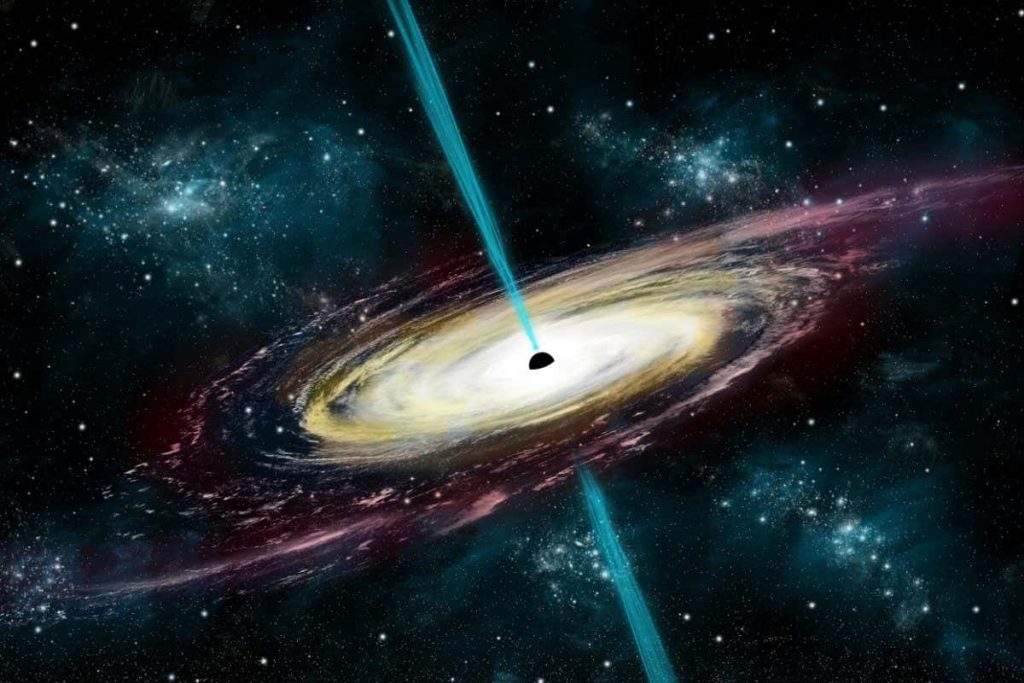Supermassive black holes that beam powerful jets of matter towards Earth, known as blazars, accelerate particles to extraordinarily high energies – and astronomers have finally figured out how
Space 23 November 2022
By Leah Crane
An artist’s depiction of a black hole spewing jets of matter
Stocktrek Images, Inc. / Alamy Stock Photo
Astronomers may have solved a major mystery about the supermassive black holes at the centres of some galaxies. A subset of these black holes called blazars blast out colossal jets of matter towards Earth, and we may now know how the particles in those jets reach such high energies.
Researchers have known about these jets for decades, but we have never been able to look into the heart of a blazar before to see how it accelerates particles. A new X-ray space telescope called the Imaging X-ray Polarimetry Explorer (IXPE) has made this possible for the first time. Yannis Liodakis at the University of Turku in Finland and his colleagues used it to look at a particularly bright blazar called Markarian 501.
“When we look at optical light and radio waves, we’re looking at the jet itself, far away from where the acceleration takes place. And there, the theoretical models basically all look the same,” says Liodakis. “But with X-rays you can go super close to the accelerator, where the magic takes place, and that is where we can discriminate between the models.”
Advertisement
There were two main models for how blazars accelerate particles: either via interactions within the black hole’s magnetic field or via shock waves propagating through the jets. The IXPE observations suggest it is shock waves. These are probably created through simple turbulence in the jet, when faster-moving plasma smashes into slower areas and gives up some of its energy.
Previous observations have revealed strange knots of material moving around in the jets, and these new observations hint that those may be caused by shock waves. Observations of two other blazars showed similar behaviour, so this same mechanism may explain particle acceleration in all blazars, Liodakis says.
This is important because the extreme areas around black holes may someday serve as laboratories through which we can investigate conditions much more extreme than scientists can create on Earth. The jets alone accelerate particles to energies far higher than any human-made collider can achieve.
“You can do very extreme particle physics, you can do tests of strong gravity, all of these things that would expand our understanding of physics, but before you do that you have to figure out exactly how these objects work,” says Liodakis. “These are the first steps to doing that.”
Sign up to our free Launchpad newsletter for a voyage across the galaxy and beyond, every Friday
More on these topics:

